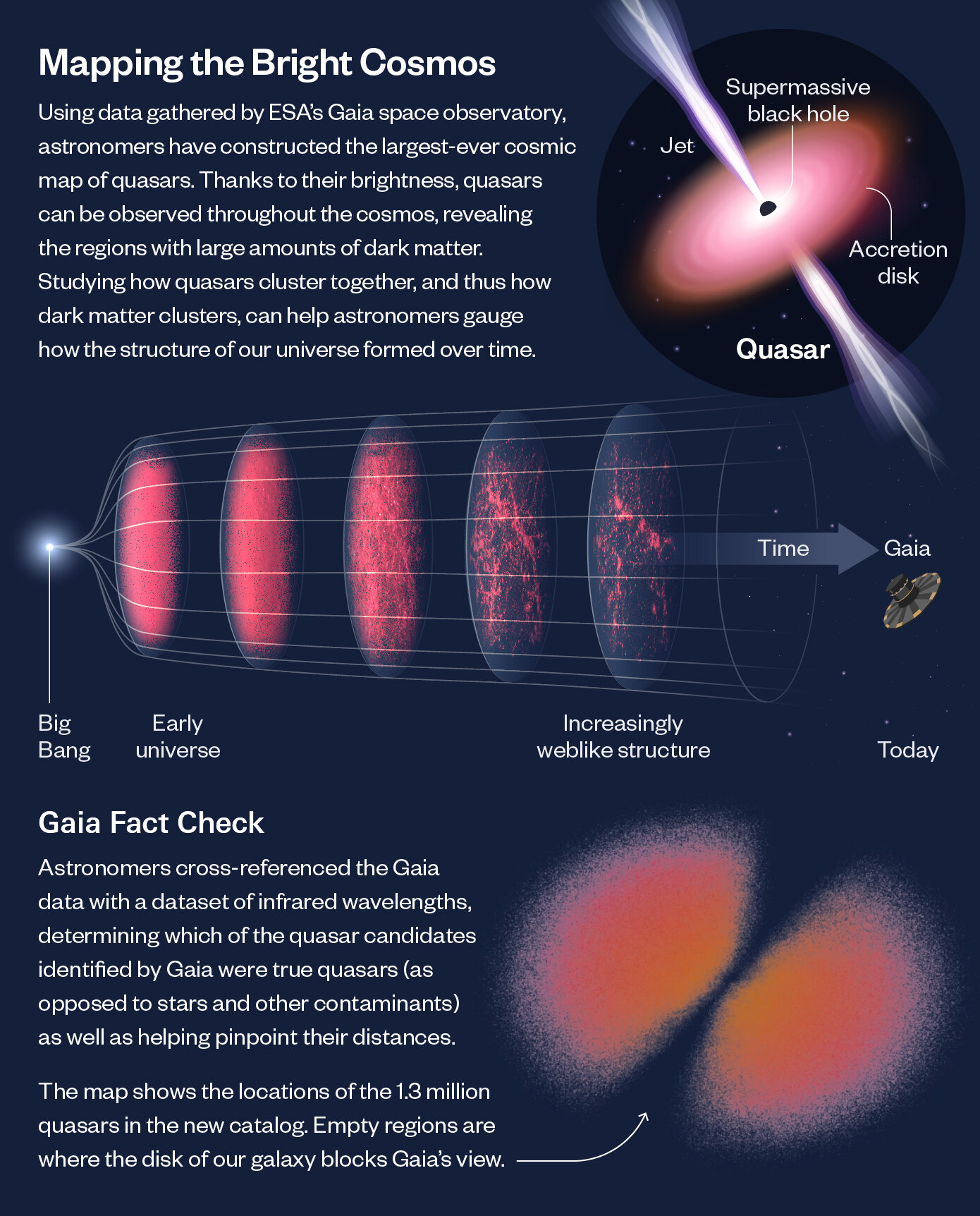The largest mapping of active supermassive black holes in the Universe
Follow us on Google News (click on ☆)
These black holes, located at the centers of galaxies and known as quasars, are among the brightest objects in the Universe despite their paradoxical name. The newly unveiled map lists about 1.3 million of these quasars, with the most distant one shining when the Universe was just 1.5 billion years old, compared to its current age of 13.7 billion years.

Each dot represents a quasar, viewed from the central point. The blank area emanating from the center is a result of missing data, obscured by the disc of our own galaxy.
David Hogg, lead researcher at the Flatiron Institute and professor at New York University, emphasizes that this quasar catalog is one of a kind. It provides a three-dimensional map covering the largest volume of the Universe ever mapped. This feat was achieved using data from the European Space Agency's Gaia space telescope, originally designed to map our own galaxy but which has also succeeded in identifying objects well beyond the Milky Way.
Quasars are intense light sources powered by supermassive black holes. The galaxies hosting them are shrouded in enormous halos of dark matter, invisible to us. Studying quasars gives valuable hints about dark matter, particularly about its tendency to clump together.
The locations of quasars and their galaxies also help better understand the Universe's expansion over time. By comparing the quasar map with the oldest light in our cosmos, the cosmic microwave background, scientists can measure the extent of matter clustering.

Infographic explaining the creation of a new map of about 1.3 million quasars across the visible Universe.
Credit: ESA/Gaia/DPAC; Lucy Reading-Ikkanda/Simons Foundation; K. Storey-Fisher et al. 2024
Utilizing data from Gaia, enriched by information from NASA's Wide-Field Infrared Survey Explorer and the Sloan Digital Sky Survey, has allowed for the elimination of contaminants such as stars and galaxies, thereby refining the distances of quasars. This collaboration also led to the creation of a map indicating areas where dust, stars, and other obstacles block our view of quasars, essential for interpreting the quasar map.
This catalog is seen as an eloquent example of the productivity of astronomical projects, illustrating how a mission designed to map the stars in our galaxy could also provide a comprehensive map of the Universe through the discovery of more than a million quasars.